Announcing the 2018 Fairy Tales Architecture Competition winners!
By Justine Testado|
Monday, Apr 2, 2018

Related
The verdict is finally out! We're thrilled to present the winning entries of the 2018 Fairy Tales Architecture Competition. Organized by Blank Space, the anticipated yearly competition invites architects, designers, students, and all creative types to write a unique architecturally themed fairy tale — which have ranged from pragmatic to dystopian to whimsical. The winners were first revealed in front of a live audience at the National Building Museum in Washington D.C. on March 29.
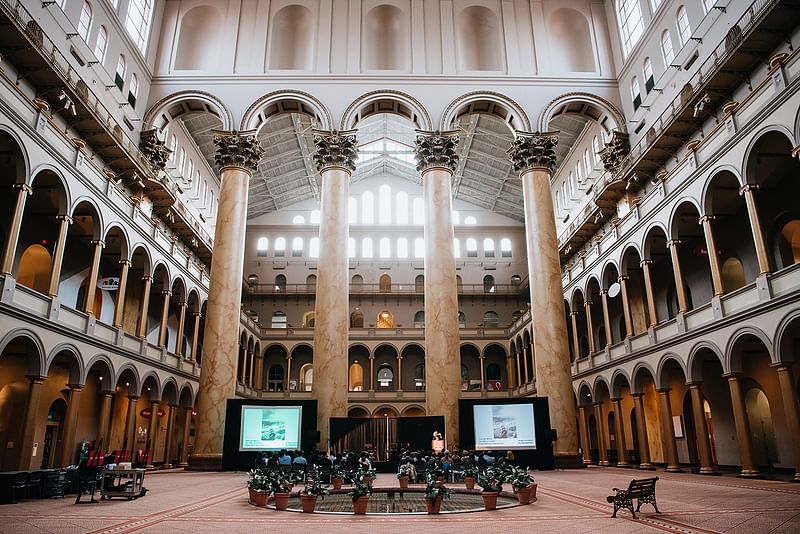
Selected from over 1,000 entries from 65 countries, the 2018 winners explore current events and the creative process through beautifully written short stories and artwork. The notable jury — which included Bjarke Ingels, Daniel Libeskind, Thom Mayne, Roman Mars, Maria Aiolova, Jenny Sabin, and Archinect and Bustler's own Alexander Walter(!), to name a few — chose three prize winners, a runner up, and nine honorable mentions. Check them out below!
FIRST PLACE: “Deep Pool That Never Dries” by Louis Liu and Senyao Wei
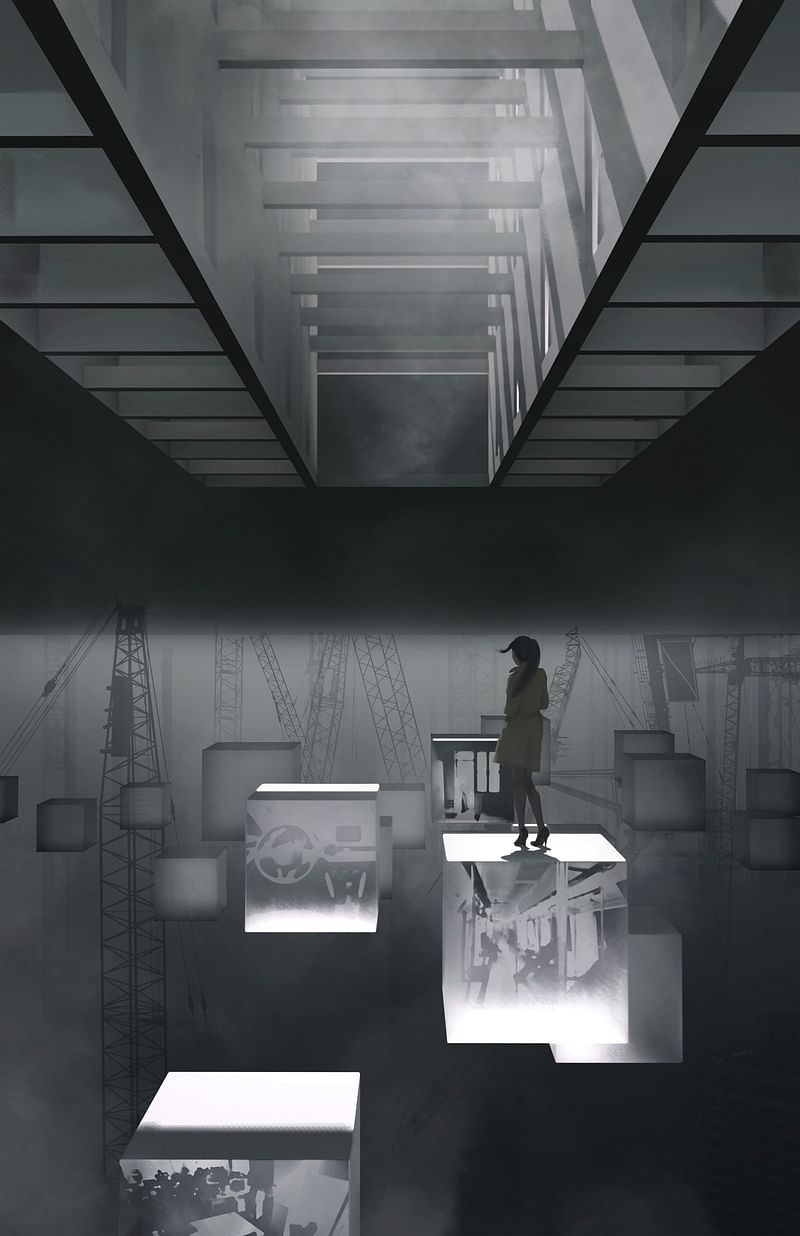

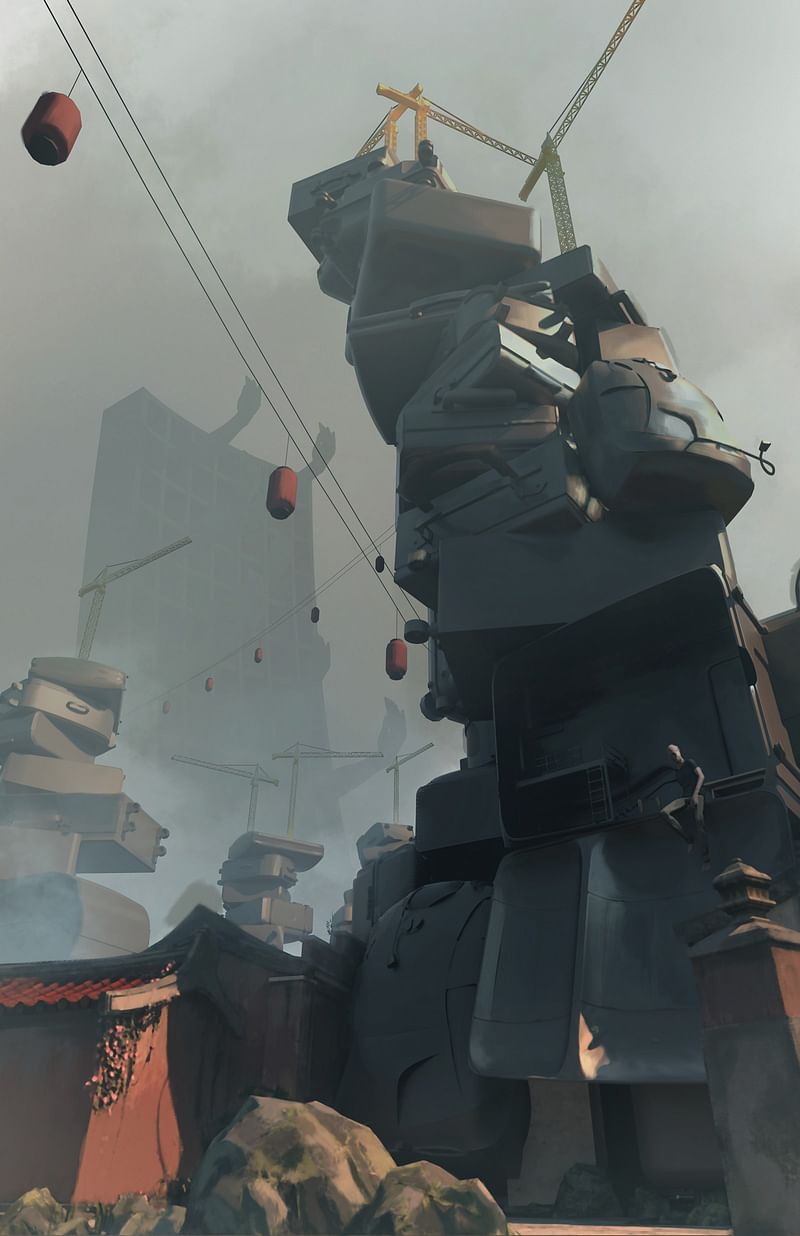
From the project authors: “In 2017, we lived in Beijing and felt the government's call for demolition. On the same day, many private media outlets in China broke out. We still remember the anger, sadness, panic, protest and disappointment against the government that were spread in the private and personal media during those two days. Afterwards the public went out of control and the government began to exercise strict control over the news. During that time, the area where Beijing was demolished was chaotic. The internet was also in disarray. However, we did not live at the scene. We did not see for ourselves how the government dismantled it. We only learned about it through the private media outlets — the same city and what happened on the other side.
We then began to think whether these news were really reliable? Of course they were not reliable. They were not written by reporters. They were written by a group of angry ordinary people. What were they angry about? Because Beijing, like every major city in the world, has a large population, it is crowded, and has many poor people. Therefore, we believe that the biggest problem in Beijing is not to disperse the poor population but to readjust the structure of the city. In this case, the so-called freer private media actually did a very bad job, in which it did not look at this in a greater picture and sought a solution, but instead focused deeply on the matter and complained. So at the end of the story, Lao Tzu's words means that if you want to reach the truest side of the city, then throw away all the media and its mediums, then every minute and every second of your life in this city is the most authentic look of the city.”
Excerpt
On the evening of November 18, the Beijing municipal government held a press conference, Su was sent to attend.
Su heard from the government that the destroyed apartment was 80 meters long and 76 meters wide, occupied by 400 migrant workers. The fire caused the government to hasten the removal of these "slums."
According to Beijing's official statistics, in 2016, the long-term resident population in Beijing was 21.7 million. The entire urban ecology was on the brink of collapse and the government proposed redistributing urban population to ease the crowdedness in the city centre.
The whole city is divided into boxes --- homes, offices, neighbourhoods, transportation. People travel from box to box, and a Beijinger spends lots of money to buy bigger and more private boxes to show their achievements. People's lives are related to the purchase of space; the conditions of marriage is to have a house, and the proximity of the house to a good school. These boxes represent one's life. And now the government will expel those who don’t own a box.
"I have to go there and see for myself,” Su wrote to the chief editor on WeChat.
"Please, be careful."
Su came to the scene. There was no one on the streets, the shops were closed, on the door plastered with an official notice: must be removed within three days, leftovers would be treated as rubbish. A temporary portable dwelling had already been half torn down. Inside, a bunk bed, cupboard, leftover bowls, and water tap can still remind Su of its past owner. An old lady who lived in this neighbourhood accepted the interview. She said that this was the home of a young man "Right when he left for work this morning, the house was torn down by the excavator. He knelt in front of the demolishing team begging for them to stop, but they just pretended like it was nothing." The old lady pointed to her right, "That apartment building, although no problem, has been forbidden to rent. It's been a day since the tenants last had electricity and water."
The building’s front doors have all been forcibly removed. Each household has about 20 square meters of space, all filled with stuff. One of them had an old man tied to the bed so that he could not get lost while his son went to work.
From afar, Su heard boots steps in the hall. The old man quickly covered his eyes with both hands, trembling.
A few people in uniforms crossed the doorway and shouted, "Move quickly!"
There was a woman's scream next door, cursing, "Screw you! It's not illegal to my home now!?" Su rushed out and saw a middle aged woman waving a kitchen knife and using her body as the non-existent door.After the woman scolded the uniformed men away, she came to the room of the elderly and kneeled beside him. Su noticed the woman was crying, her composure like a defeated soldier that had just encountered a family member.
After Su left, she turned on her phone, arranged some photos and updated her Wechat "moment". Many other reporters replied words of encouragement, and that they are on the way. She knew they were racing against the government's ban on the report.
Su went directly back to the office, spent the night finishing the report, and had it sent to the editor's mailbox by 4 am. By 7 am, the editor told Su that they have just received notice that all newspapers cannot report anything related to the clean-up campaign. Not ready to give up, Su left the office with despise towards these so-called "colleagues” for not doing anything. [...]
SECOND PLACE: “Ascension” by Sasha Topolnytska

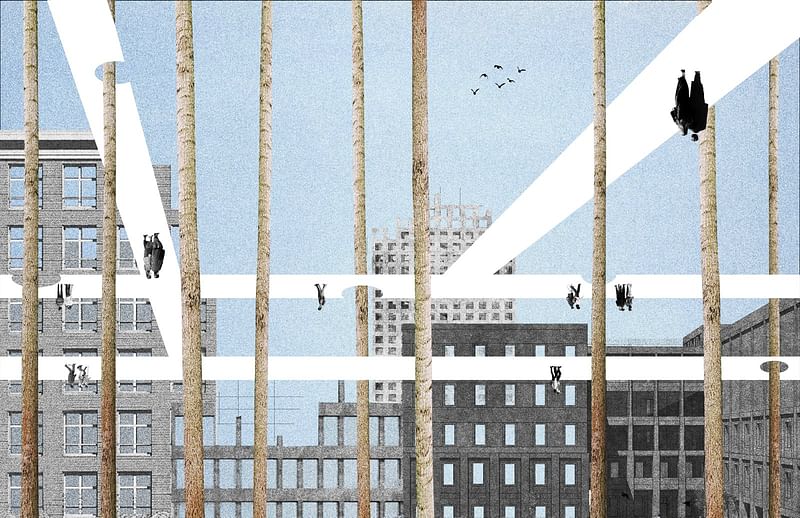
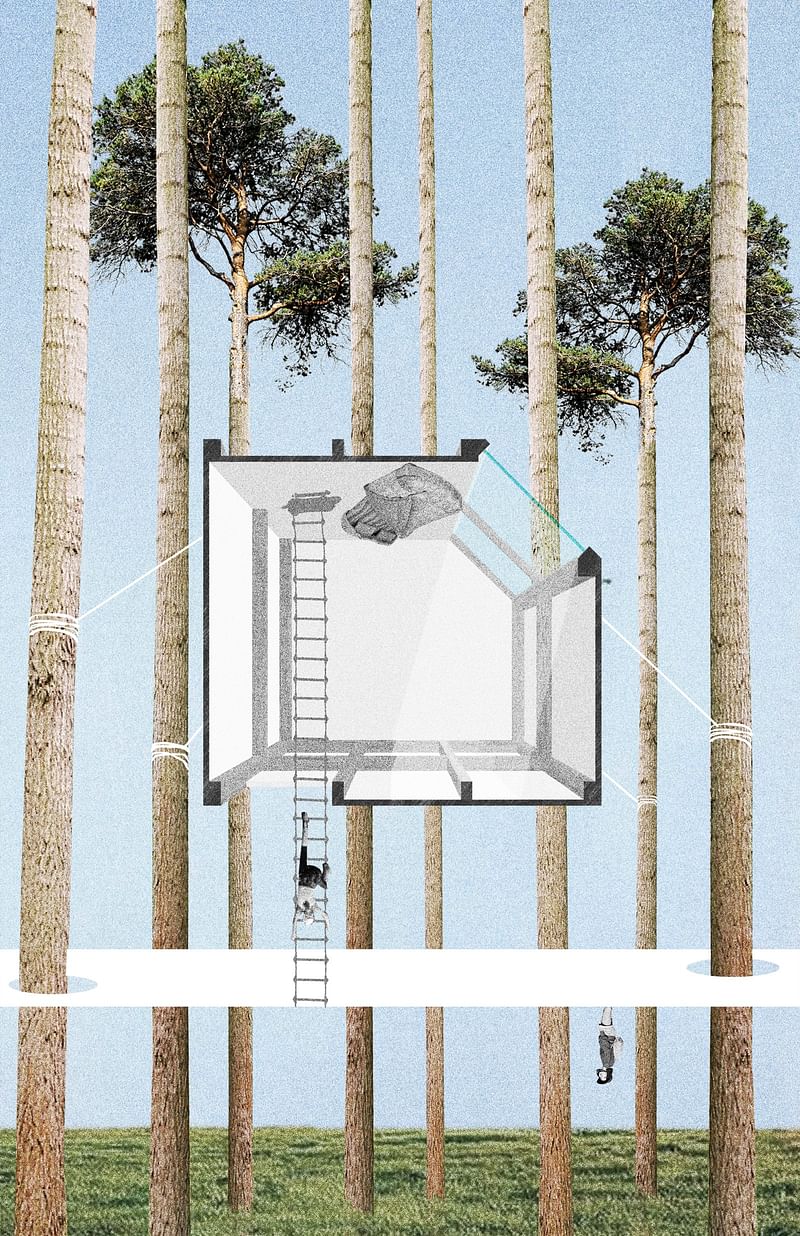
From the project author: “The idea for my story is very simple: sustainability can no longer be just an option, it is imperative for the survival of humanity on this planet. The story itself does not go into defining major issues our plant is facing right now. Instead, the story takes us to a fictional future, envisioning a consequence from human activity. While “Ascension” is a story about Earth, who eventually must resort to defending herself by trying to rid her surface of all human and human made objects, it is also an emotional journey of people fighting to stay and learn how to be a friendlier neighbor.”
Excerpt
From the diary of the unknown survivor.
I woke up laying on my back. My head hurt and I felt dizzy. I pulled away a chair that was laying on my leg. I felt a terrible pain in my right shoulder. I was still in my apartment, or at least it looked like it, except it was upside down and I was sitting on a ceiling. All of my furniture sprawled around me. I tried to think of the last thing that I could remember before I woke up: I was sitting in my chair in my living room and reading the news on my laptop and then...nothing. I remember nothing. I woke up. I’m staring at my room. I’m confused. It almost looks like someone rotated it 180 degrees. Is this why my shoulder hurts? Because I landed on it as I was falling down (up)? Nonsense. There is a giant hole in a floor (or what was a ceiling the last time I remember). Where is my coffee table? When I got up, I walked toward the window, in search for any sign of explanation. As I looked out, I suddenly remembered the headline of the news I was reading right before it happened: “The World is Losing Its Gravity”.
Nothing manmade had to be: it was made by choice...
It’s been 20 years since the day the world lost its gravity. Well, it’s gravity to us, that is. At first, it looked like everything on Earth has lost it, but as we started tolook around we realized that the trees, plants, rocks, and animals were still living on the Earth’s surface. After some time of grieving and sadness, what happened has finally started to settle in. We were being punished; prohibited from living on the surface of this planet. It is almost as if the Earth unshackled herself of all of unnecessary things: humans and all human-made. I am one of the survivors that did not drift into space. I was one of the lucky ones. I was inside of a building, on that day it happened; in a building that was grounded well enough into the Earth’s crust to not fly out into space. [...]
THIRD PLACE: “The Paper Moon” by Ifigeneia Liangi



From the project author: “I'd like to think of my story as a magical realist fairy tale, challenging ideas of the classical fairy tale, such as for example a linear rather than complex relationship between good and evil. I believe that in the new 'antimythical' fairy tale, the quest of the characters should not only be personal, a greater awareness of the self, as we are not all striving for the same idea of happiness. Instead, I believe that narratives should engage with wider questions and ideas, with a clear and responsible voice towards adults, but most importantly, children.”
Excerpt
— I am well made. I am round. It's a good shape. Sometimes I'm oblique. At least that's what they say. I'm also papery. But not that thin paper that you can see through. I'm made of good quality paper. Thick and textured. Yes it is! If I really wanted I could make shapes with my body. Yes I could! I could fold into a paper boat. Or a paper frog. Or even a paper wolf. And then I'd swim and I'd jump and I'd howl! And then I'd shine from joy... Yes... I would...! And I will.
Once Upon a Time, there was a paper moon. It was pinned in the sky and wanted to shine like the stars. So it decided to go to a witch. After the big flood, the sea level could touch the sky with the high tide. One starry night, the paper moon approached a star who was shining because it had fallen in love. With a starfish. The star would meet the starfish with the high tide. The moment it reached its peak, the paper moon rolled on the starfish and drifted into the sea to get to the house of Electra Hoover, the witch with the electric hoover.
Electra's house was floating. The only houses that survived the big flood were neither the taller nor the more sturdy ones, but the ones that had an imagination. In Electra's house lived the things that she had saved during the disaster: A circus's tent which was painted with watermelons and knew the lyrics of “Watermelon Man”; two characters reminiscent of Comedia dell'arte; a big fish who liked to bite; innumerable frogs; her lucky black cat; and The Three Little Pigs together with the big bad wolf. Electra was a part-time witch and she liked to feed the birds who nested in her electric hair. Birds liked her hair because it reminded them of the electricity cables. Her full-time job was in the circus as a magician. Every evening, the people and animals of the floating city would take their boats and visit the circus.
The circus's guard was a giant Grandmother. She wore a sewing machine as a hat so that she could stitch the stars back in place when they fell in the sea. In the circus also lived Astra, the astronaut who sold popcorn. In his day job he sold orangejuice. He drove a vespa-house and collected oranges with his golden friend the frog. With every orange juice that he sold, he also told a story. Astra liked to ride on his golden frog and jump high up in the sky, pretending he is in space. He was determined to tell stories to the whole city, because he believed that this was the only way to keep it afloat.
The paper moon arrived in Electra's house, and hid in a shadow on a spotted wall. Electra's house had spotted walls which would light up and make it look like the starry sky. In that way the pirates wouldn't see it at night. That stormy afternoon, Electra was desperately trying to collect the rain with her hoover in order to make clouds and reduce the sea level, when Astra passed by on his vespa-house.
— Everything will eventually sink. And the paper moon will drown and how will we find our way through the night? She said.
— I'll ask the wolf to howl and push the paper moon away from the water so that it doesn't drown... Astra replied. [...]
RUNNER-UP: “Middle Earth: Diaramas for the Planet” by NEMESTUDIO

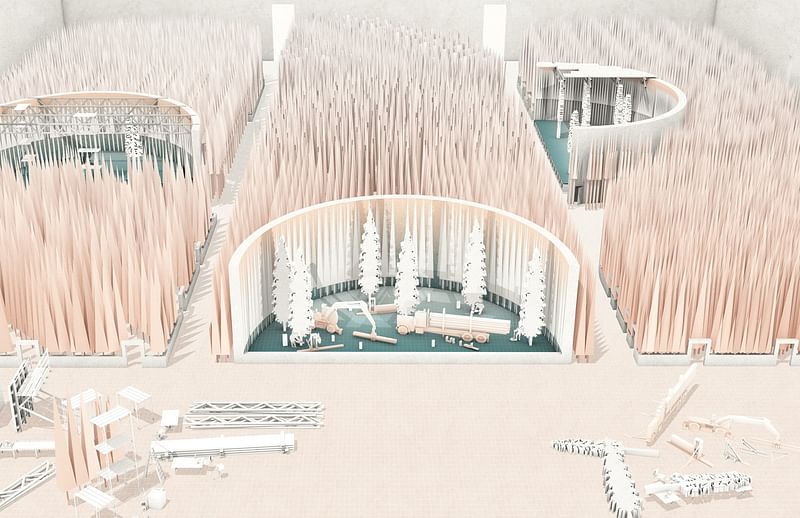
Excerpt
Once upon a time, the climate of the Earth finally changed. Glaciers have shrunk. Global carbon dioxide, temperature and sea levels all rose to unprecedented levels. Land ice sheets in Antarctica and Greenland saw an acceleration of ice mass loss. There was no discussion of climate change at this time. It was just a fact of life. There were no climate change skeptics, no deniers, and not even any indifference to this matter. Children books contained many tales of climate change, in which it was usually depicted as this bothersome wolf that kept coming back. The word “nature” was deemed as a term that belonged to the ancient humans. To regulate conflicts that arose between nations because of the negative consequences of climate change and to maintain harmony between countries, International Council of Environments was founded. In its inaugural meeting, the Declaration on Post-Natural Environment was drafted and signed by all countries, whose major item was to build the first International Museum of Post-Natural History. The museum was going to exhibit records, collections, historical specimens in relation to climate change with stories on animals, fungi, ecosystems, geology, paleontology and climatology and improve the humanity’s understanding of this new post-natural world.
“If there is no nature left as we know it, we believe it is our responsibility to showcase it’s the history of idea of nature to the world. What would the first world’s Post-Natural History Museum look like? How do we represent an archeology of climate change to future generations? Where should it be located?” declared the Council Secretary in the big press conference right after the meeting. After months of deliberation, the Council decided that a giant museum built at the very middle of the earth, situated at the 0°N 0°E , the exact location on Earth where the equator crosses the prime meridian near the Gulf of Guinea, Africa. The museum was named as the “Middle Earth.” Instead of classifying natural specimens (as it would be in a normal natural museum), Middle Earth contained large scale dioramas each of which displaying a specific problem brought by climate change and took place at the “middle of the earth”, i.e., around the equator, the earth’s zero-degree latitude: the melting of the icebergs, deforestation in Brazil and Indonesia, plastic waste in the Pacific Ocean, sand mining in Singapore, and the e-waste dump sites in Ghana. [...]
Don't forget about the Honorable Mentions in the image gallery below!
To read all the winning and honorable mention entries in full, click here.
2018 Jury:
Bjarke Ingels (BIG)
Daniel Libeskind (Studio Libeskind)
Thom Mayne (Morphosis)
Maria Aiolova (Terreform 1)
Mitchell Joachim (Terreform 1)
Chase W. Rynd, Hon. ASLA (National Building Museum Executive Director)
G. Martin Moeller, Jr. (National Building Museum Senior Vice President and Curator)
Alan Maskin (Olson Kundig)
Liam Young (Tomorrow’s Thoughts Today)
Roman Mars (99% Invisible)
Cornelia Funke (Author)
Gregory Maguire (Author)
Celenk Bafra (Istanbul Modern)
Jenny Sabin (Jenny Sabin Studio)
Alexander Walter (Editor, Archinect and Bustler)
David Basulto (Founder of Archdaily)
Lucas Dietrich (Thames & Hudson Publishers)
Darren Wall (Publisher / Art Director)
Es Devlin (Set Designer)
Becky Quintal (Executive Editor of Archdaily)
Matthew Hoffman and Francesca Giuliani (Blank Space Founders)
All images and quoted text courtesy of Blank Space.
RELATED COMPETITION Fairy Tales 2018

RELATED NEWS The winners of the 2017 Fairy Tales Architecture Competition

RELATED NEWS Fairy Tales 2016 winners address real architectural issues through fictional storytelling

RELATED NEWS Winners of the 2015 Fairy Tales Architecture Competition



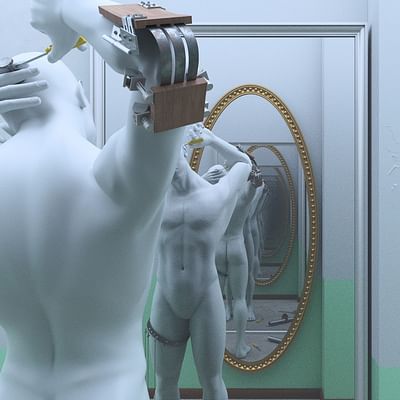
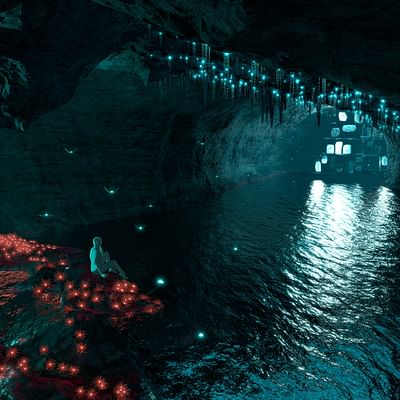
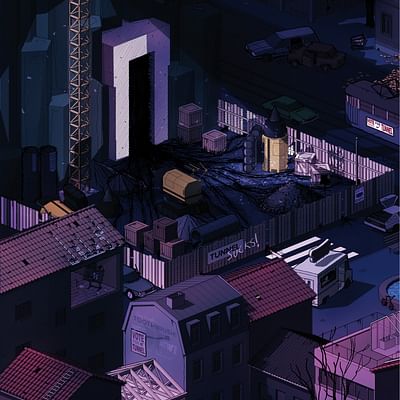
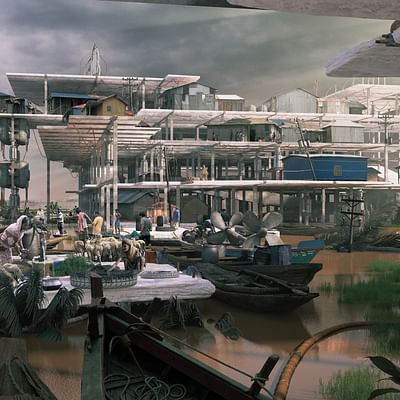
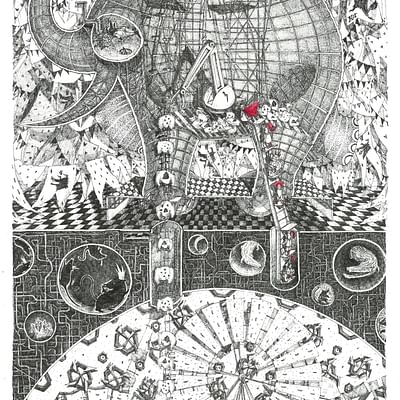
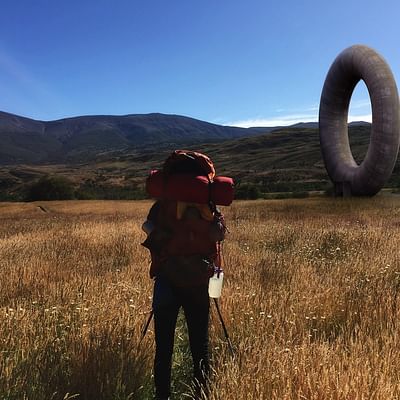


Share
0 Comments
Comment as :